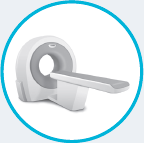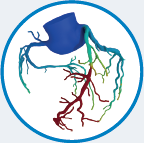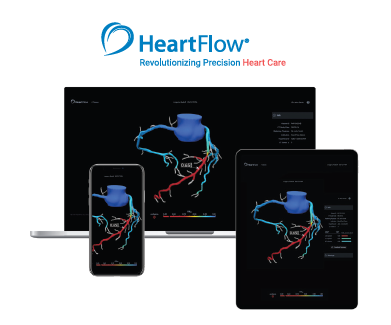Coronary CTA enables clinicians to non-invasively visualize a patient’s coronary artery disease (CAD), but what happens when it’s unclear if the disease is impacting blood flow?
- Without additional patient tests, the HeartFlow Analysis quickly and non-invasively delivers functional information (FFRCT values) about each blockage.
- Completing the picture for each patient leads to better clinical decision making and improved patient outcomes.1
- Recognized in ACC/AHA Chest Pain Guidelines to help guide treatment for patients with CAD.



Patients with symptoms of CAD can be referred to the CT + HeartFlow pathway. First, a standard coronary CTA scan is completed. If the reading physician sees disease, a HeartFlow FFRCT is ordered and the CCTA images are sent directly to HeartFlow where AI algorithms, trained analysts and computational fluid dynamics are used to create the HeartFlow Analysis. This personalized, colorcoded 3D model of a patient’s coronary arteries indicates the impact that blockages have on blood flow – information otherwise only available with an invasive procedure.
![]()
![]()
![]()
![]()


